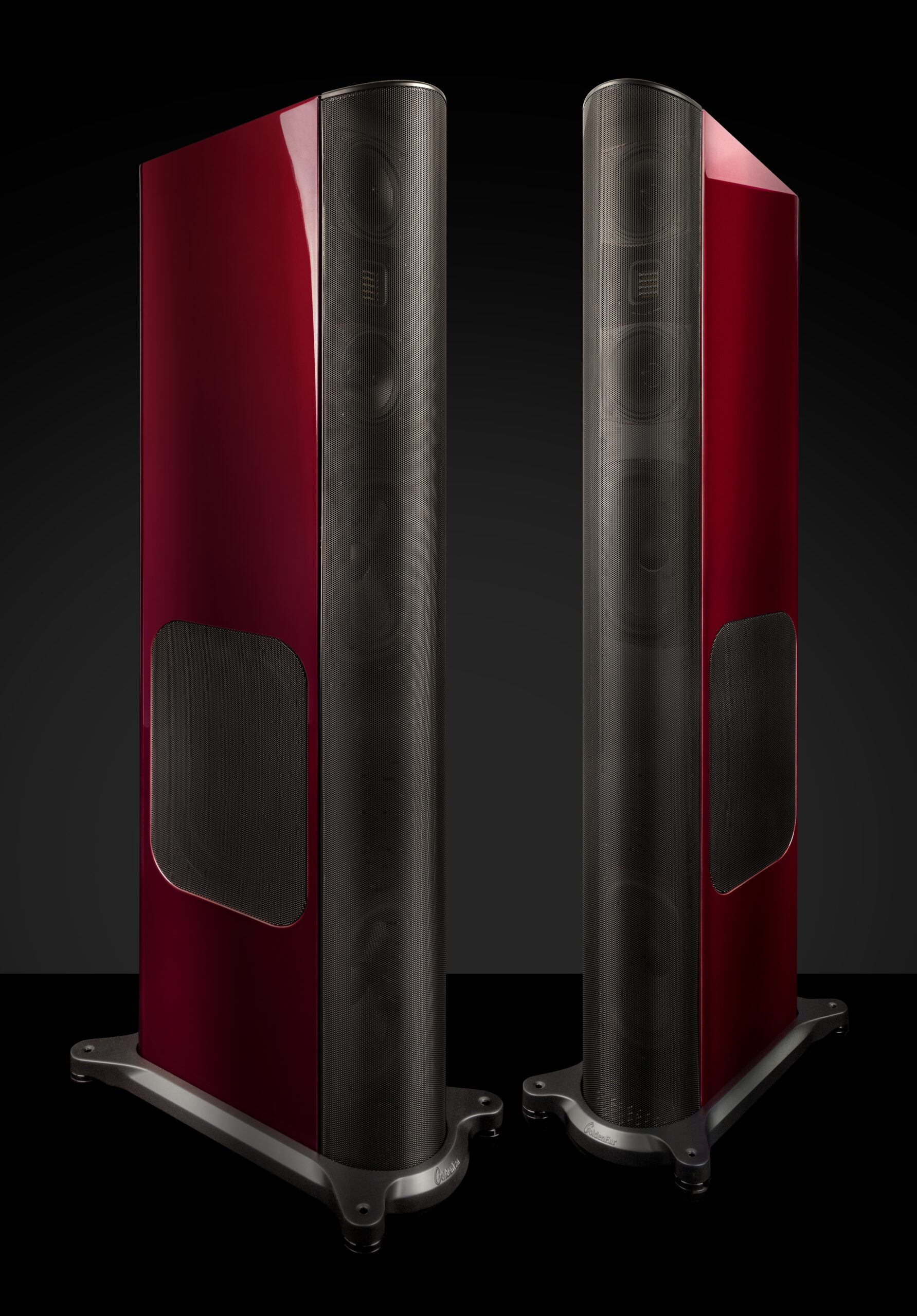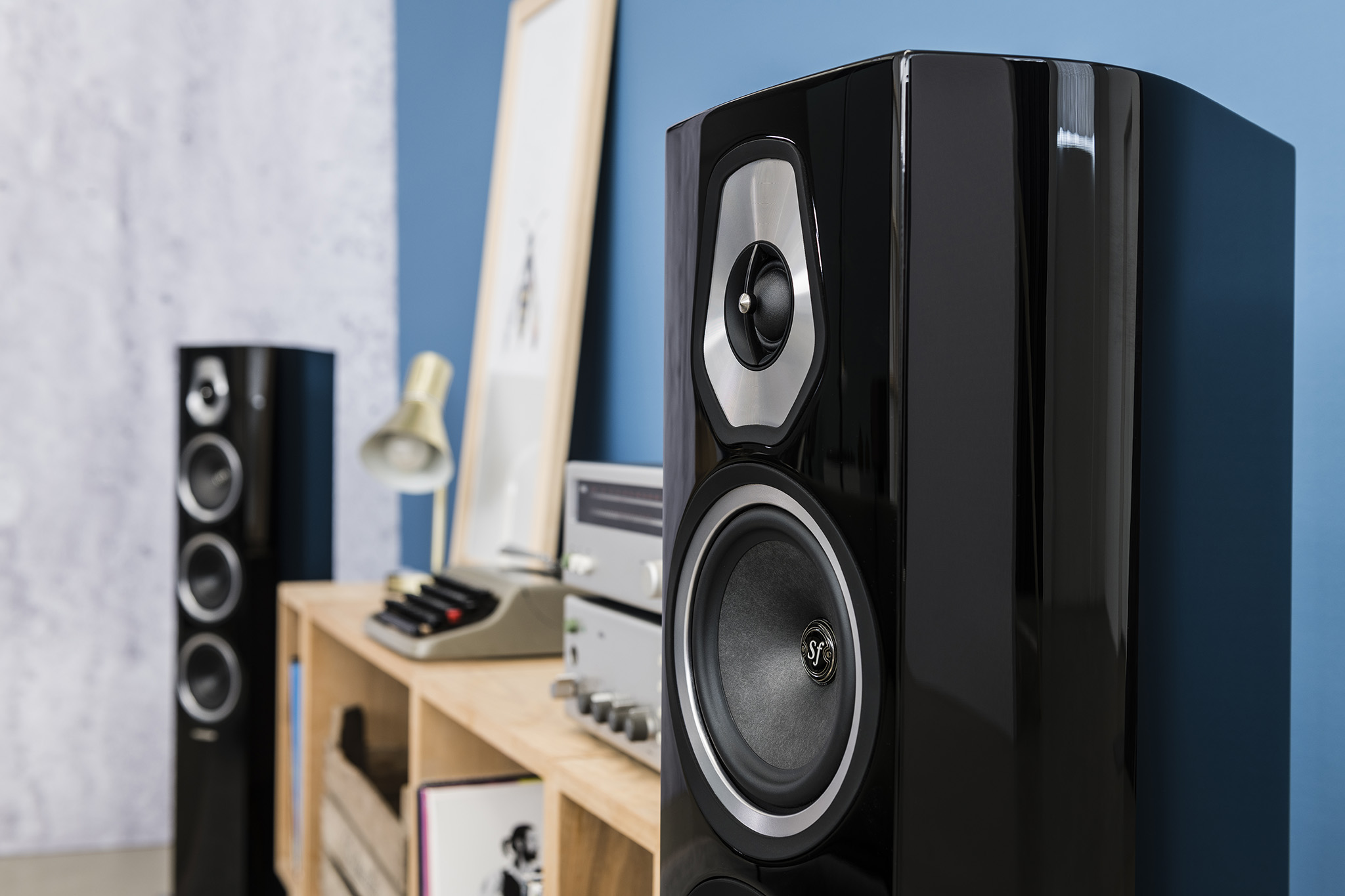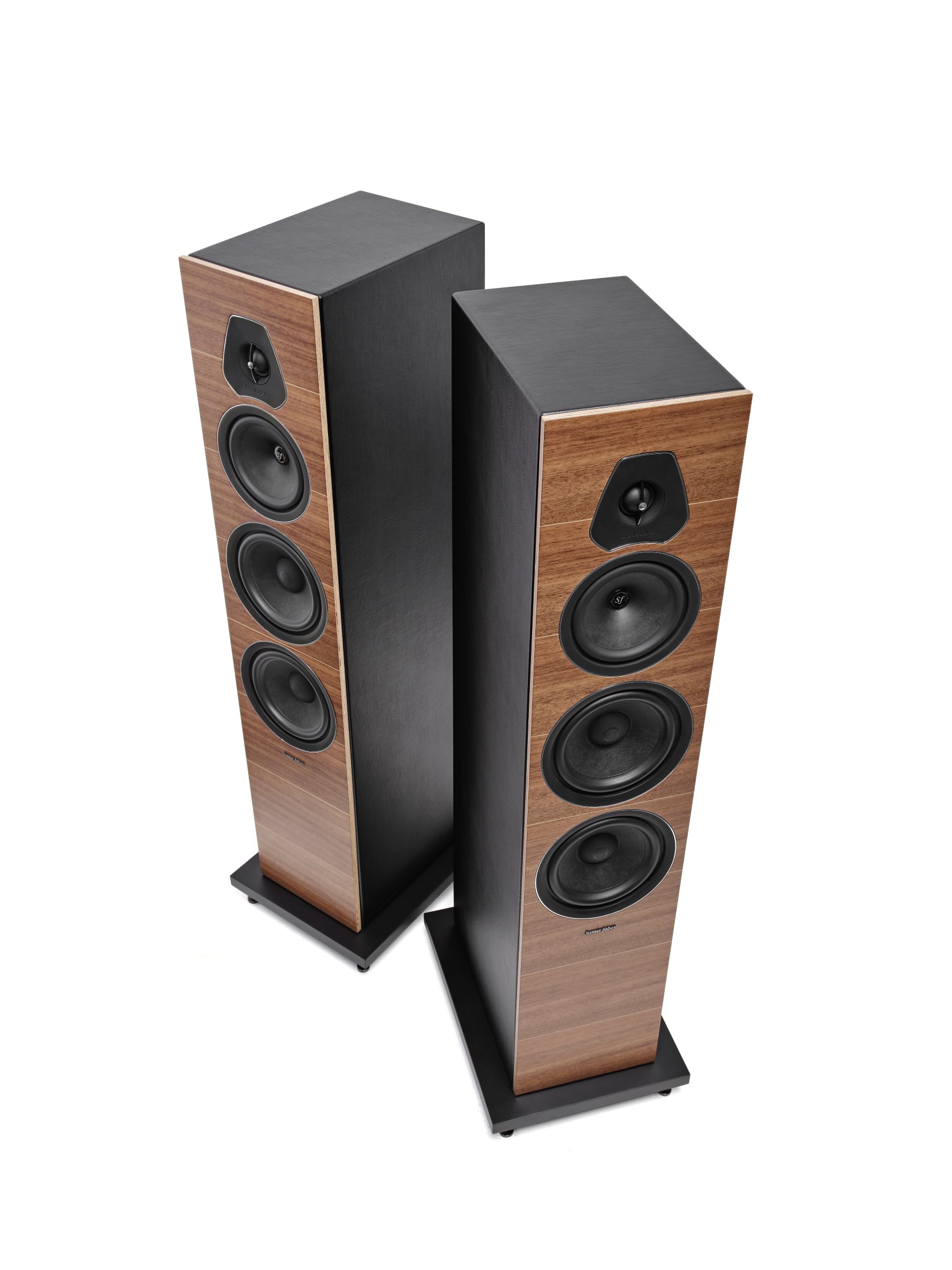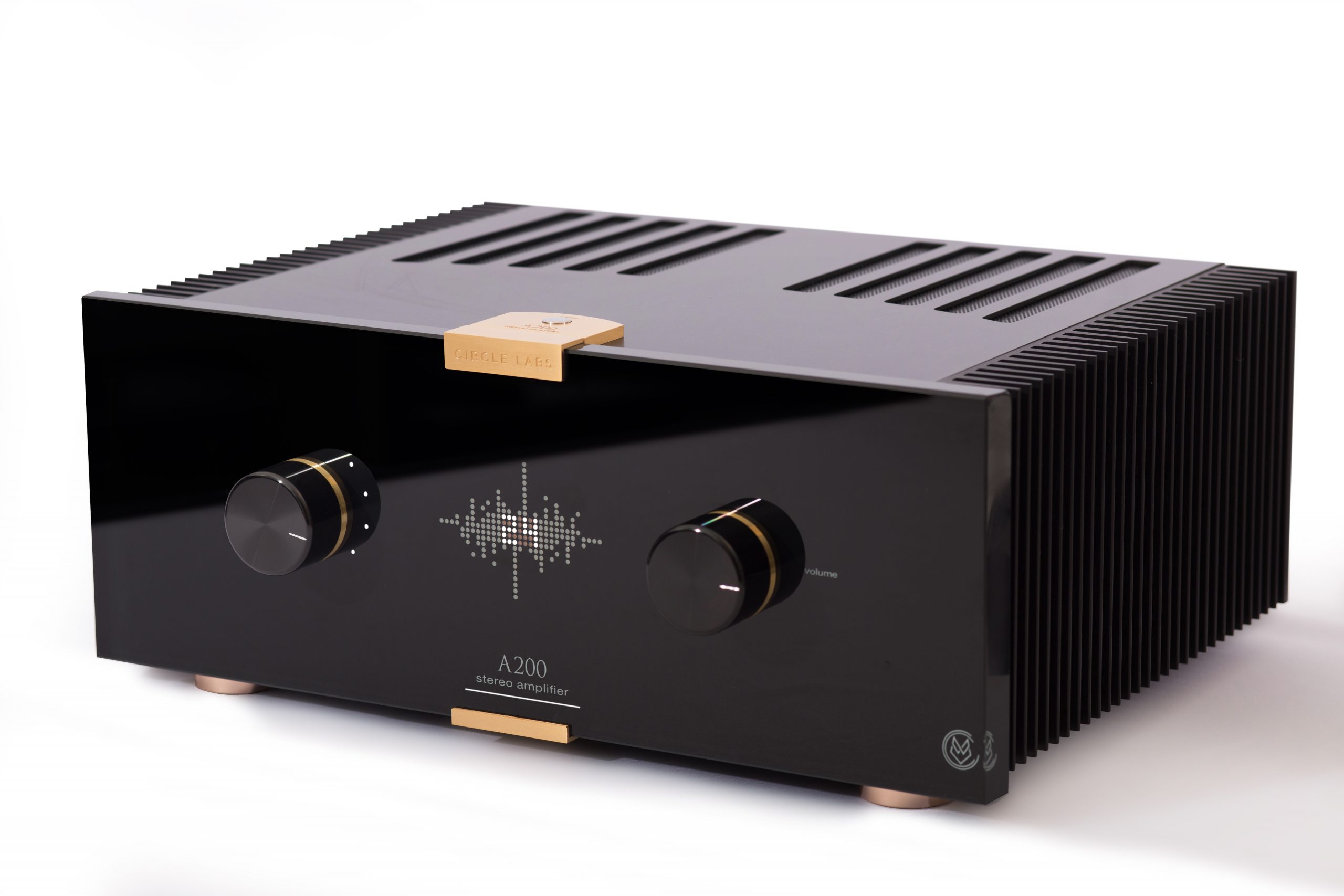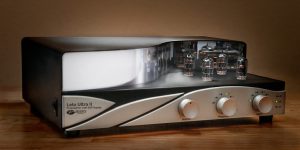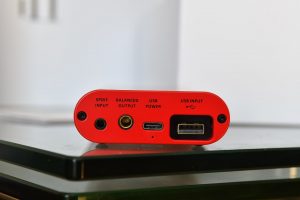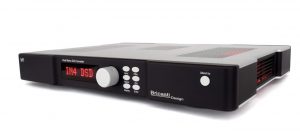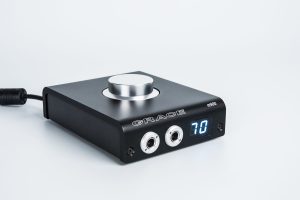It Even Makes Julienne Fries
It was a golden age for Television, or perhaps commercials in the 1960s. The Ronco Veg-O-Matic hit the market, promising to ease the life homemakers everywhere. This food slicer did it all; its catch-phrase, "It slices! It dices! It even makes julienne fries!" became the go-to reference for multi-function devices for years. The real catch, however, is that the Veg-O-Matic did all of its functions well. Modern devices are not much different than the Veg-O-Matic. They all have to do more. Smartphones and automobiles alike are bloated with features because if companies do not include them, they are subject to the stigma of being "behind the curve." This stigma seems to be a worse fate than assuring these added features perform well, since function is so often neglected in favor of excess.
It was nerve-wracking when glancing over the fact sheet of the Parasound Halo P 6 (just the P 6, moving forward). The P 6 is endowed with many features for its affordable asking price of $1495USD. This meant running the P 6 through its paces was going to be an involved undertaking, however the merit became clear as I thought about what the P 6 would offer if Parasound executed the P 6 well, like the Veg-O-Matic! The list of features for the P 6 can be found via Parasound's website HERE.
Unpacking and set-up
The P 6 is rack-mountable with included hardware. It occupies two rack spaces in a standard nineteen-inch-wide rack, but dimensions out at 17-1/4 inches wide, by 15 inches deep, and 4-1/8 inches high. The front panel matches the rest of the Halo line, and all of the knobs and buttons feel confident. Its steel chassis cover is thicker than average; it does not seem it would flex if another component were nested on top. All adornments are metal, which is in harmony with the rest of the P 6's construction, and provides a rich feel. The included remote control is hefty enough, and the blue, back-lit buttons that match the mild lighting used throughout the front panel have a confident feel.
On the rear panel the myriad of ins and outs are intelligently arranged. The P 6 is limited to a single balanced input (pin 2 hot on all balanced connections), but does possess balanced outs for connecting an amplifier such as the Parasound A21+ that I will use with it. Further, there is a single balanced subwoofer output and two unbalanced subwoofer outputs. The remainder of the flexible ins and out will be discussed as used throughout the review.
For those like myself who thoroughly enjoy vinyl, but grew up in the springtime of digital media, the P 6 offers a flexible phono stage that accommodates just about any output cartridge that one could ask for. A small toggle switch allows adjustment between 47K ohm moving magnet types, 47K ohm moving coil types, and 100 ohm moving coil types. No tools are required to attach the ground from your plastic disc spinner thanks to a knurled binding post. I will be using a Rega P1 turntable with the Rega Carbon cartridge set to the 47K ohm moving magnet position on the P 6. I am going to assume if the phono stage performs well in this set-up, the performance should easily translate through to the other cartridges of varying inputs.
Technology
While the overall connections are similar to that of the former P 5 preamp, the P 6 offers some upgrades comparable to the modernization of the A21 to the A21+. I think that says a lot about Parasound's ability to pack performance where it counts. The improvements move the cash-out-of-pocket (or Bitcoin-out-of-server) needle to $1495 USD, which is $400USD more than its predecessor. But I am happy to report that the combination of functional improvement along with the audible performance of the P 6 justifies the increase. Let's thumb through the most notable upgrades.
First is a Burr-Brown analog-resistor volume control. Most volume controls on preamps work via a device not much different than a slide-whistle, at least in principle. As you turn the volume knob up, less resistive material is in the signal path, so a stronger signal moves through to the amplifier, thereby increasing the volume. The name of the device that performs this action is called a potentiometer, and it works "fine." However there is a mechanical component that rubs against a swath of resistive material in a potentiometer. The mechanical contact, and the existing swath of resistive material is prone to wear and can become noisy over time. The solution would be to have a separate resistor for each step in volume, and it is available in the form of a device called a stepped attenuator. The swath of resistor gunk is eliminated in a stepped attenuator, but that pesky mechanical connection still exists whether by manually moving the contacts, or electronically controlled with costly relays.
The Burr-Brown analog resistor volume control eliminates the remaining woes by controlling the resistor selection in the electronic domain. This means no mechanical contacts, and lower noise while preserving the integrity of a high performance resistor for setting the volume in each step. It is a very slick solution to what has always been one of the most challenging aspects of preamplifier performance, and it works very well. Perhaps the most important note is the digital control of the chip never touches the audio signal. The analog signal path is maintained, while the processor is limited to selecting the resistor being asked for to achieve the desired volume.
Even more interesting is that the analog resistor volume control allows Parasound to employ an "Audio/Log Taper" that allows for finer adjustments through the middle of the volume knob's travel where listeners are inclined to fine-tune their listening experience the most. This feature takes some getting used to. There is a slow increase in volume that becomes exponentially faster as the read-out passes 70 or so. At no point was a lack of gain an issue. Parasound provided the below graph to show the difference in how volume is approached in the P 6, which is a handy visualization. The red, linear line is a typical potentiometer, while the green curve is the logarithmic taper employed in the P 6. Blue represents the increase in sensitivity through the mid-region of volume when using a logarithmic taper. All roads ultimately lead to Rome in the form of the same maximum gain.
The second upgrade is a more capable ESS Sabre32 DAC chipset. The most important aspect of this upgrade is the P 6 now supports DSD up to DSD256, DoP DSD, and PCM up to 384Khz/32-bit through the asynchronous USB 2.0 input. The Sabre DACs are also very quiet and are respected as some of the best available; they offer an improvement in fidelity, not just mere functionality. The DAC utilizes the ESS fast roll-off digital filter for the conversion to analog. Both the optical and coaxial digital inputs will support up to 192KHz/24-bit PCM, and while they were feeling generous, Parasound included two toslink inputs for whatever you are shoe-horned into using optical inputs for. My gross assumption is the second toslink input is for a gaming system of choice which will allow unparalleled fidelity for Fortnite victory music. Parasound advises in their manual to keep your cables short. This is sage advice, and like the A21+, a great deal of effort has gone into writing the user manual. It is worth the read.
Aside from cosmetic and user-interface upgrades, Parasound has also refined some pre-existing areas of the P 6 that are high-impact for listeners in comparison with its predecessor, the P 5. This includes bumped-up gain on the phono stage for lower-output coils, and improved aspects of the circuitry bolstering balance tracking and channel separation. The 12dB gain that is added to the front panel one-eighth phono-plug input is of supreme handiness since many smart-phones and media players often do not have enough gain via their headphone jack to generate reasonable volume levels without cranking up the volume up to eleven, or in the case of the P 6, to 99. Rumor has it, too, the P 6 kept the high performance headphone amplifier based around the Texas Instruments TPA6120 integrated circuit from the P 5. The only remaining bit is to answer the question: does it all add up?
Analyzing the Analog
To evaluate the actual preamplifier performance I ran the Bricasti M1 DAC/network player through the balanced input using Esperanto Audio XLR cables. In all cases I chose to utilize Cardas Clear balanced XLR cables from the P 6 to the A21+. Single-ended performance utilized MIT 330 Shotgun interconnects between the Bricasti M1 and P 6. In all cases the A21+ were driving my Diomede loudspeaker which is a dual 10" woofer, extended range 4-way.
Let's just get this one out of the way: The P 6 and A21+ make a beautiful pair! Not just visually, but sonically. This is due in part to the audible equivalent of comfort the P 6 provides to the pure neutrality of the A21+. In this, I did find the P 6 to impart a signature to the sound; however it was a warm tilt to the spectral balance of the frequency range vs. damaging artifacts like the rounding-off of sharp dynamics or a gross loss of detail. This character was consistent using both balanced and single-ended inputs, though I did find the balanced inputs to define the entirety of the sound better, which is to be expected.
Zooming back out, the P 6 is a wonderful listen. Never did I get the sense I was listening to a price point, nor was I dissatisfied with the level of detail it provided. I chose not to get into the apple/orange battle of the Briacasti M1 driving the A21+ directly vs. running the M1 though the P 6 first. I do need to share one notable moment when doing so for personal giggles since I was caught by surprise. Awolnation released its debut album Megalithic Symphony in 2011 which contained the techno-rock song "Sail." There is a heart-stopping, engine of a beat through the whole song complimented by a synthesized bass during the chorus. The synth-bass sits below the intense kick-drum hits in magnitude and can often get smeared. The P 6 was able to maintain this separation well, and its ability to control the low frequency range translated through every piece of music I enjoyed. It always seems these minor details are crucial and I find them to be the difference between simple enjoyment, and goose bumps.
Midrange and high frequency performance were well done too. Books by the world-famous author Stephen King have done famously well when translated to film by Hollywood. In the 1999 hit The Green Mile, Randy Newman scored and incredible mix of southern character and haunting symphony in its soundtrack. "Now Long Gone," runs only one-minute and ten seconds, but contains a melodic and outright haunting chord progression by the string section that was not masked or smeared by the P 6. Air, body, and resolution were all present and in accord with each other at all times.
Overall, when used as a straight-forward preamp, the P 6 is a very good performer imparting very little to the sound as its own signature (other than the smallest tilt to warmth). As important: The P 6 does not seem to remove anything from the music. Standing on this alone, purchasing the P 6 to be used just for its connectivity as a preamp makes it worth its price tag.
Utilizing the Parasound P 6 as a phono preamp did not disappoint either. All of the resolution, soundstage, and control were existent in both quantity and quality to show the phono stage was not some kind of "forced feature" that had to be there to keep up with the times. It would take a significant turntable upgrade for me to need much more phono stage than what is existent in the P 6.
The presentation is set back in the soundstage, but the width was gigantic. The tonal balance is similar to that found when using the Bricasti M1 through the P 6 as stated above. My toes tapped through Eric Clapton's album Me and Mr. Johnson (Reprise 48423-1), I was moved through the ups and downs of Ravel's Bolero (Phillips 6570 092), and was joyfully taken aback by Bobby McFerrin's 1988 smash-hit off Simple Pleasures, "Don't Worry, Be Happy" (EMI E1-48059). No judging me on the last track. "Don't Worry, Be Happy" was the first a cappella song to reach number one on the Billboard Hot 100 chart! Good music is good music, and Simple Pleasures is a well done, fun recording to listen to. The phono stage in the P 6 did a wonderful job separating all of Bobby's vocal ticks and pops while resolving his layered vocals with ease. My colleague John Marks tells me that Bobby McFerrin's father was an opera singer whose mentor and most important advocate was Boris Goldovsky. That (obviously) was back in the days of Jim Crow. Robert McFerrin was the first African-American man to sing at the Metropolitan Opera, in 1955. In 1956, McFerrin's Rigoletto was the first Met title role by an African-American.
Diving into the Digital
"But wait! There's more!" It is time to explore the new DAC integrated into the P 6 anchored by the ESS Sabre 32 chipset. First up was a Jaton CD1000B feeding the P 6 DAC through an Esperanto Audio "Blue" S/PDIF coaxial cable. The P 6 performed well with redbook (44.1Khz/16-bit) and 96Khz/24-bit FLAC files alike. The overall sonic character was similar as described with the analog section above, which if you skipped straight to this section without reading what came prior, was good!
A personal litmus test for a well executed DAC is just how subtle the differences are when stepping up in resolution format. Redbook has a surprising amount of information when decoded and filtered well, and the new DAC in the P 6 confirms this conclusion to me once again. 96Khz/24-bit resolution added a quieter background and cleaner edges in whole but the difference from 44.1Khz/16-bit was not make-or-break when comparing the same, well recorded album. While it may be tempting to think this effect should be opposite, here is why it is not.
There is so much more information available in a 96Khz/24-bit (and higher) recordings, the errors are smaller and less significant, so long as the quantity remains small. This has a leveling effect between a well executed DAC and a poorly executed one. This is not the case in a 44.1Khz/16-bit recording since every error is far more significant (think 1980's digital). If a DAC can marginalize the difference between good recordings at Redbook resolution verses high resolution, it is an indicator that the DAC has been designed well. This litmus test is also a way to assure the most is being had out of a high resolution recording. In other words: if a well designed DAC can take an average face and make it look beautiful, imagine what it can do with a supermodel! Cassandra Wilson's New Moon Daughter was used for this comparison since I own both a 44.1KHz/16-bit sample and a 96K/24-bit version, though the P 6 was enjoyable with every CD I listened.
The P 6 had no problem interfacing with my Windows 7 laptop. Following the well-written instructions in the manual, it was only a driver download from Parasound's website to listening through the P 6 as a Windows device. I was able to run up to a resolution of DSD128 with the media I had on hand, Rebecca Pidgeon's The Raven. The P 6 DAC seemed to enjoy the USB input the most, and the characteristic tilt toward a warm spectral balance slid a little closer toward center making the overall presentation more neutral. The background was still, and the sound stage was wide and deep. These enjoyable traits were consistent with all digital media and formats played via the USB input. Well done!
Useful 2.1 performance
Theater bypass is a practical feature for a pre-amp to have when integrating it into a dedicated home theater. When using the theater bypass inputs on the P 6, the preamp allows the front left, right, and two subwoofer channels to flow through as if the P 6 were nothing more than a piece of wire. This makes integration of the P 6 into a home theater is effortless while preserving the integrity of a dedicated music system, and channel-specific adjustments in a home theater.
When not in bypass all three subwoofer outputs utilize the same driving circuitry. While superfluous to the overall sonic picture, those who frequent the Curia Julia of various online forums may have received some misinformation deeming parallel line-level outputs to be evil. I feel compelled to address this since it was the first thought I had when I saw multiple subwoofer outputs. These line-level outputs operate at high impedances and low currents despite sending low frequency information. All line-level outputs operate in this fashion. In this, a well-designed driver section of line-level information will not affect the signal in a derogatory manner when used as intended, even when multiple devices are plugged into it. This applies not only to Parasound; many of the companies that offer multiple line-outs for subwoofers provide robust designs. There are many more subwoofer/room/crossover integration ills that need to be addressed well before any concern should be given to the use of paralleled outputs by a manufacturer. This is exactly why Parasound included a nifty-difty, active main loudspeaker/subwoofer crossover section in the P 6!
The active main loudspeaker/subwoofer crossover section in the P 6 represents the depth of understanding Parasound has as to what truly counts. So much so I was inspired to beg permission to keep the P 6 a little longer than necessary and write a separate article regarding subwoofer/loudspeaker integration! This will be soon to come. In the meantime, I found integrating a subwoofer to the main loudspeakers quite easy with good results. For this, I utilized a small tower loudspeaker with dual 5-inch woofers that have a measured quasi-anechoic bass response to 50Hz yielding a confident 42Hz in-room and a 8-inch subwoofer capable of playing to 26Hz as measured quasi-anechoic, and 22Hz in-room.
Once set-up and dialed in on the crossover of the P 6, there was wonderful agreement between the main loudspeakers and subwoofer. This was most satisfying since we are so often confined to two dials on a subwoofer amplifier for crossover/room adjustment, unless a small fortune is laid-out on an extreme quality subwoofer. With the P 6 I was able to dial in a modest subwoofer as if it were a much more extravagant model, building even further into the P 6's value proposition.
Get Yours Today
Yes, it seems the P 6 even makes julienne fries! Most importantly: like the Veg-O-Matic that defined the quality of Ronco products in the 1960s that launched them to decades of success, the P 6 does every function Parasound crammed into it well. Even before the costly consideration of cables to connect everything, it would be impossible to purchase a preamp with bass management, state-of-the-art DAC, high performance phono-stage, and headphone amplifier that yields the same functional and sonic performance the P 6 offers at $1495USD. In this, the P 6 stays true to Parasound's mission and provides an extreme value for its price-tag, especially when paired with a matching Parasound Halo series amplifier like the A21+.
P 6 2.1 Channel Preamplifier and DAC
Retail: $1495
Parasound










